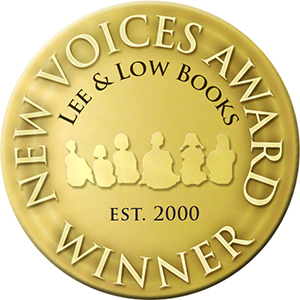In this series, Tu Books Publisher Stacy Whitman shares advice for aspiring authors, especially those considering submitting to our New Visions Award.
Last week on the blog, I talked about hooking the reader early and ways to write so you have that “zing” that captivates from the very beginning. This week, I wanted to go into more detail about the story and plot itself. When teaching at writing conferences, my first question to the audience is this:
What is the most important thing about a multicultural book?
I let the audience respond for a little while, and many people have really good answers: getting the culture right, authenticity, understanding the character… these are all important things in diverse books.
But I think that the most important part of a diverse novel is the same thing that’s the most important thing about any novel: a good story. All of the other components of getting diversity right won’t matter if you don’t have a good story! And getting those details wrong affects how good the story is for me and for many readers.
So as we continue our series discussing things to keep in mind as you polish your New Visions Award manuscripts, let’s move the discussion on to how to write a good story, beyond just following the directions and getting a good hook in your first few pages. This week, we’ll focus on refining plot.
Here are a few of the kinds of comments readers might make if your plot isn’t quite there yet:
- Part of story came out of nowhere (couldn’t see connection)
- Too confusing
- Confusing backstory
- Plot not set up well enough in first 3 chapters
- Bizarre plot
- Confusing plot—jumped around too much
- underdeveloped plot
- Too complicated
- Excessive detail/hard to keep track
- Too hard to follow, not sure what world characters are in
We’ll look at pacing issues too, as they’re often related:
- Chapters way too long
- Pacing too slow (so slow hard to see where story is going)
- Nothing gripped me
- Too predictable
 Getting your plot and pacing right is a complicated matter. Just being able to see whether something is dragging too long or getting too convoluted can be hard when you’re talking about anywhere from fifty to a hundred thousand words, all in one long file. Entire books have been written on how to plot a good science fiction and fantasy book. More books have been written on how to plot a good mystery. If you need more in-depth work on this topic, refer to them (see the list at the end of this post).
Getting your plot and pacing right is a complicated matter. Just being able to see whether something is dragging too long or getting too convoluted can be hard when you’re talking about anywhere from fifty to a hundred thousand words, all in one long file. Entire books have been written on how to plot a good science fiction and fantasy book. More books have been written on how to plot a good mystery. If you need more in-depth work on this topic, refer to them (see the list at the end of this post).
Continue reading →



 Inglewood, California, is the winner of the company’s fifteenth annual New Voices Award. Her manuscript, Take a Picture of Me, James Van Der Zee, is a picture book biography of James Van Der Zee, an African American photographer best known for his portraits of famous and little known New Yorkers during the Harlem Renaissance. From a young age, James Van Der Zee longed to share his vision of the world with others. When he discovered photography, this dream became a reality. Over many years, James worked hard to build his own business, where he specialized in highlighting the black middle class of Harlem, an aspect of American society rarely showcased at the time.
Inglewood, California, is the winner of the company’s fifteenth annual New Voices Award. Her manuscript, Take a Picture of Me, James Van Der Zee, is a picture book biography of James Van Der Zee, an African American photographer best known for his portraits of famous and little known New Yorkers during the Harlem Renaissance. From a young age, James Van Der Zee longed to share his vision of the world with others. When he discovered photography, this dream became a reality. Over many years, James worked hard to build his own business, where he specialized in highlighting the black middle class of Harlem, an aspect of American society rarely showcased at the time. 
 Paula Yoo is a children’s book writer, television writer, and freelance violinist living in
Paula Yoo is a children’s book writer, television writer, and freelance violinist living in

